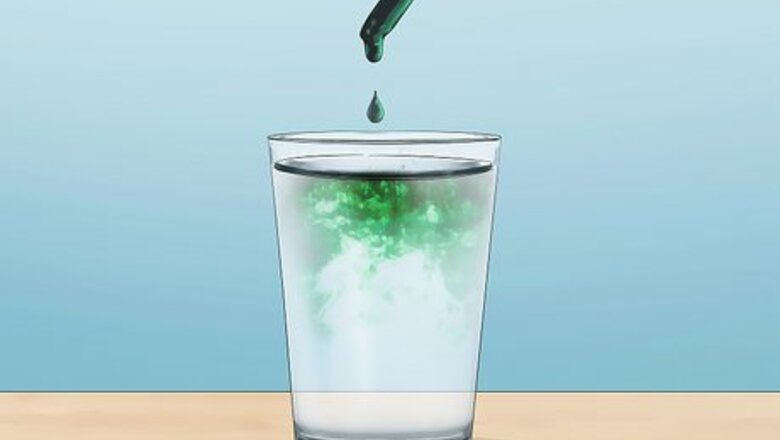
views
How to Make Chlorophyll Water with Chlorophyll Extract

Squeeze chlorophyll drops directly into water. Since each chlorophyll extract product is a little different, read the manufacturer's directions—it will tell you how much water to use and how many drops to add. Once you add the drops, the chlorophyll water is ready to drink! For example, most manufacturers direct you to add around 30 drops to 1 cup (240 ml) of water. Note that some chlorophyll extracts are labeled "chlorophyllin." This is a semi-synthetic mixture of sodium copper salts that come from chlorophyll.
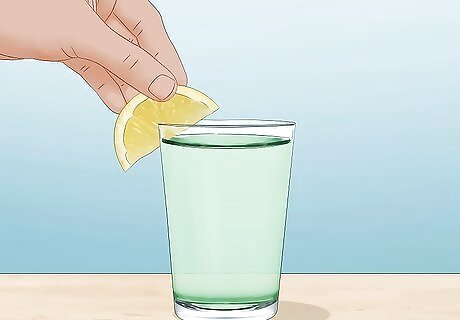
Add mint or lemon to make flavorful chlorophyll water. Some people find that chlorophyll water tastes unpleasantly grassy or earthy. Turn your spa water into an amazing chlorophyll drink by adding sliced cucumber, fresh mint, or a wedge of lemon to chlorophyll water. If you'd like a sweet drink, add a spoonful of simple syrup. Play around with adding chlorophyll drops to juice, tea, lemonade, or smoothies. You can also shop for chlorophyll extract that's flavored with essential oils like mint or spearmint.
How to Make Chlorophyll Water from Fresh Veggies
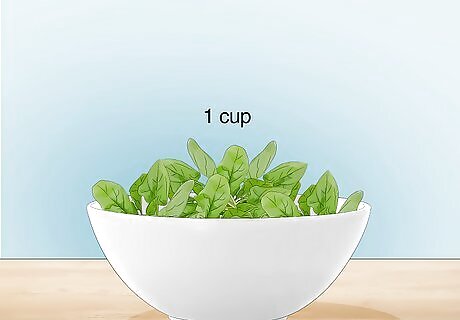
Gather at least 1 cup (60 g) of leafy greens that are high in chlorophyll. Although a lot of vegetables contain green pigment, you need produce that's high in chlorophyll, so it's easier to extract. Here are some great greens that have a lot of chlorophyll: Parsley (1 cup/60 g = 38 mg of chlorophyll) Fresh spinach (1 cup/30 g = 23.7 mg of chlorophyll) Garden cress (1 cup/50 g = 15.6 mg of chlorophyll)
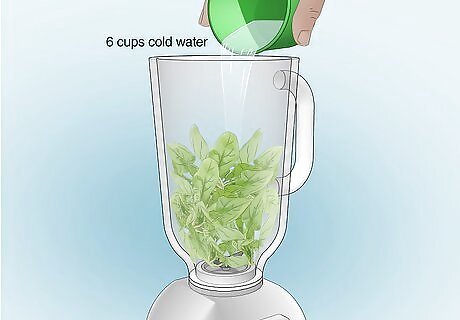
Blend the leafy greens with 6 cups (1.4 L) of cold water. Put your parsley leaves, spinach, or cress into a blender and pour in the water. Pop the lid on the blender and blend it on high for a few minutes to completely liquefy the produce. If you're using a high-speed blender, you can probably blend the mixture in under a minute.
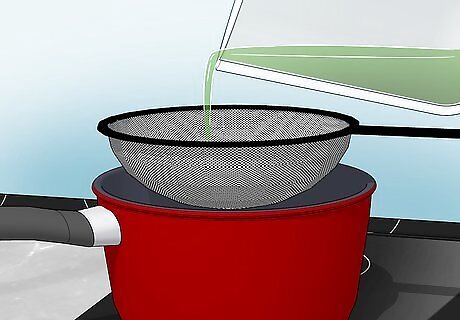
Pour the liquid through a fine-mesh strainer into a saucepan. If you don't have a fine-mesh strainer, line a colander with a thin kitchen towel and set that in the saucepan. Pour the blended mixture into the strainer or towel-lined colander and give it a few minutes for the liquid to drip into the saucepan. Discard the plant matter or put it into compost.
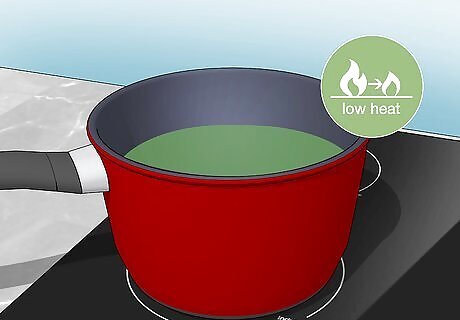
Heat the strained liquid on low heat until it simmers. Stir it occasionally and heat the green liquid until it bubbles—you'll see the chlorophyll pigment separate from the liquid. Then, turn off the heat.

Chill the chlorophyll water and drink it within a week. Pour the chlorophyll water into a container and add a handful of ice. Put in the fridge until it's cold—at this point, you can drink the chlorophyll water or strain it again for a thinner, less-concentrated drink. If you strain it, you'll get a paste-like chlorophyll extract. If you choose to strain the chlorophyll water through cheesecloth, use the thick chlorophyll extract that you're left with into pasta dough or sauces. This adds a beautiful green color without affecting the flavor of the dish.
What are the health benefits of chlorophyll water?

Chlorophyll has antioxidant and anti-inflammatory properties. You've probably also heard that chlorophyll can prevent cancer, treat acne, help you lose weight, boost your energy, and reduce body odor. Unfortunately, more research is needed to prove that chlorophyll does these things. Most nutritionists agree that chlorophyll water is safe to drink in moderate doses, but you can also get the same antioxidant and anti-inflammatory properties from eating a diet rich in green produce. Although chlorophyll isn't regulated by the FDA, an Oregon State University study used an average daily dose of 100 to 300 mg in its study.















Comments
0 comment